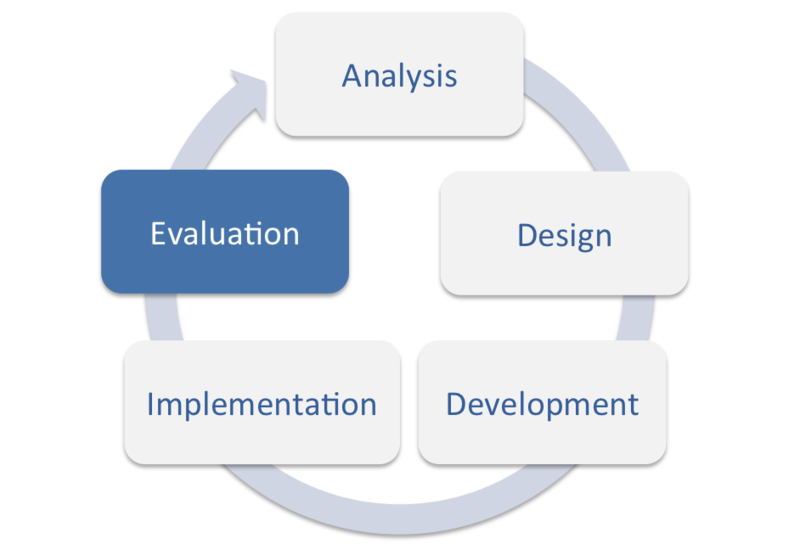Table Of Content

The implementation stage is when you will begin loading content into a learning management system (LMS) such as Thinkific. During implementation, you will also be checking to ensure all content functions work properly. Depending on the situation and project’s time pressures, it is helpful for organizations to have an understanding of both models. This allows them to pick the optimal approach for each given program. Below is a demonstration of the specific outcomes from the five ADDIE steps in the case of corporate training – the process of training employees via various techniques or activities.

The Develop Phase

How can you encourage them to devote time and attention to learning? How can you help them prioritize this at work while managing their main job responsibilities? Creating a clear communication strategy will make the learning top-of-mind and help to create more impact. You can create one or more trainee “personas” who display the general characteristics, knowledge, and experience of your target audience. Recognizing their needs and expectations will enable you to actively manage these, tailor your training to your audience and make it more relatable.
Create Your Course
These can include weekly one-to-one or group coaching or webinars to deepen the learning and answer any questions the learners might have. What is the protocol if users experience technical difficulties during the training? It’s a sensible idea to have additional IT support on hand and let learners know who to contact. The final step is to develop a communication strategy to reinforce the importance of learning to your audience.
Learn more
The ADDIE model is generic and applicable to any type of learning experience, audience, or industry. The fact that it is not industry-specific has helped ADDIE become one of the most common design models in use. Several other models for instructional design are based on variations of the ADDIE model. You can make use of storyboards to visualize the training and develop prototypes. Throughout the development phase, you’ll need to go through a testing and review process to ensure that everything works — both practically and in alignment with the overall design. This process can be time-consuming, as you must reassess and iterate the instructional solution if you identify any disconnects or inefficiencies.
What Is the ADDIE Training Model? (Template + Examples)
You will explore traditional instructional design models and the progression of the learning design approach to creating online learning experiences. This is a multidimensional—and essential—component of the ADDIE process. Evaluation is done throughout the implementation phase with the aid of the instructor and the students. After implementation of a course or program is over, a summative evaluation is done for instructional improvement. Throughout the evaluation phase the designer should ascertain whether problems relevant to the training program are solved, and whether the desired objectives are met. Designers play a very active role in this stage, which is crucial for the success of the project.
In the Analyze phase of the ADDIE process, the first task is to identify the problem you’re trying to solve. For example, maybe it’s poor sales, a non-inclusive culture, or a lack of skills to move to a more digitized organization. From here, you can identify the core business problem and decide whether it can be solved through effective training, or if other organizational development interventions will be more effective. Instructional designers also need to determine and manage stakeholders’ needs.
Analysis phase
Just hit publish, invite learners via email, and track learner progress and results. A good LMS streamlines much of the work necessary to deliver your content, and track learner progress and results. Don't start planning your course until you understand your audience and the training needed.
Alternatively, courses could start with the most complex topics first and break down the subject in following segments. The development stage takes the outline defined in step 2, creates the assets required to bring it to life, and tests various methodologies for delivering the content. Research shows that ADDIE methodologies offer a systems-based, iterative learning and development design strategy while incorporating feedback and review to improve. While some instructional designers might dismiss ADDIE as a throwback approach that limits creativity, there’s something to be said for doing everything you can to get it right the first time.
Is k-12 public education a business? What is a viable model for education? - ResearchGate
Is k-12 public education a business? What is a viable model for education?.
Posted: Mon, 18 Aug 2014 07:00:00 GMT [source]
The ADDIE model of instructional design was one of the first instructional design models developed and quickly became a gold standard. Now the ADDIE training method is widely used to provide a skeleton for all types of instructional design materials creation, and the ADDIE training model is used around the world in teaching instructional design. There are plenty of helpful models and frameworks that help instructional designers assess and create training materials. Suppose the root cause of the problem is employees lacking specific knowledge, skills, or the right mindset.
After all of these elements are determined, you’re ready to create storyboards so you can see the big picture. Practitioners over the years have made several revisions in the stages of the original hierarchical version. It was in the mid-1980s that the version similar to the current version appeared. Today, the influence of the ADDIE method can be seen on most ID models being used. Like any good craftsman, your choice of design tools should depend on the project at hand and your desired outcomes. With this Excel template, you can easily break down the different phases of the ADDIE model process into tasks and track your progress across the project.
Reflect back on how the course went, both as an individual reflection and with clients and team. Evaluation and feedback are the doorways to continuous improvement. The ADDIE process is a time-tested model that will help you conceptualize and make sense of the steps needed to create an engaging learning experience that achieves your desired outcomes. If you’re developing a course curriculum, training developers, or seeking to become a learning organization, it’s vital to reach for a strategic approach. The design (or lesson planning) phase is when you start creating an outline of what you are teaching.
Organizing the learning environment helps to deliver a course that is free of challenges (Branch, 2010). The ADDIE model offers clear and well-defined guidelines for every phase of instructional design. This clarity gives structured guidance for instructional designers, educators, and stakeholders through the entire process. With distinct stages and objectives, the model facilitates an efficient approach to creating effective learning experiences. The ultimate goal of the Development phase is to produce finalized learning materials.
This model attempts to save time and money by catching problems while they are still easy to fix. The facilitators’ training should cover the course curriculum, learning outcomes, methods of delivery, and testing procedures. The development phase is where instructional designers and developers create and assemble the content assets that were blueprinted in the design phase. In this phase, storyboards are created, content is written and graphics are designed.
This happens because business requirements ask for courses to be created quickly to start generating additional revenue streams for the company. In doing so, they ignore time-consuming steps that actually improve the quality of the course in the long-run. The five phases of the ADDIE model are designed to help guide you (and your team) through the course design process. Essentially, it’s a roadmap for building training that ensures learners meet specific objectives. New designers have a tendency to want to jump directly into development (I totally get it; that’s the fun part!), but it’s important to understand the bigger picture before making that leap.
At the end of this course, learners will be able to demonstrate actions that lead to cross-selling. How to set up a virtual event if your physical event is cancelled during the coronavirus outbreak, in seven steps. Furthermore, L&D professionals increasingly use learning analytics and automation to identify the weak points of learning, patterns and potential of employees. A simple way of identifying areas of improvement is gap analysis – comparing the desired situation to your current situation. The Centre for Education Technology at Florida State University first introduced the ADDIE model in 1975 for the US army. Its use later spread across all other branches of the US armed forces.
Throughout each stage of development, the model encourages ongoing feedback and adjustments, fostering continuous improvement. This iterative approach ensures prompt incorporation of necessary modifications, leading to the refinement of instructional content throughout the entire design process. Collaboration with stakeholders is key to defining the purpose, whether it’s enhancing current programs, developing new ones, or making resource allocation decisions. The evaluation of the process is guided by key evaluation questions.

No comments:
Post a Comment